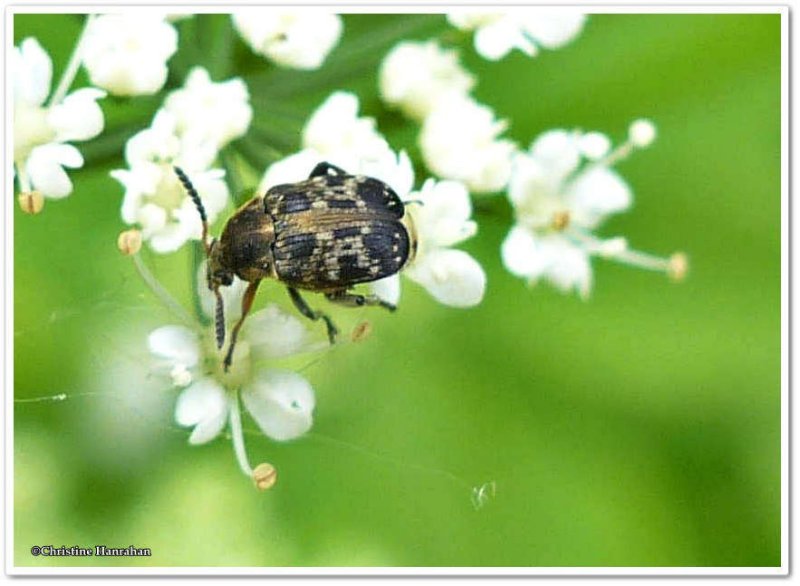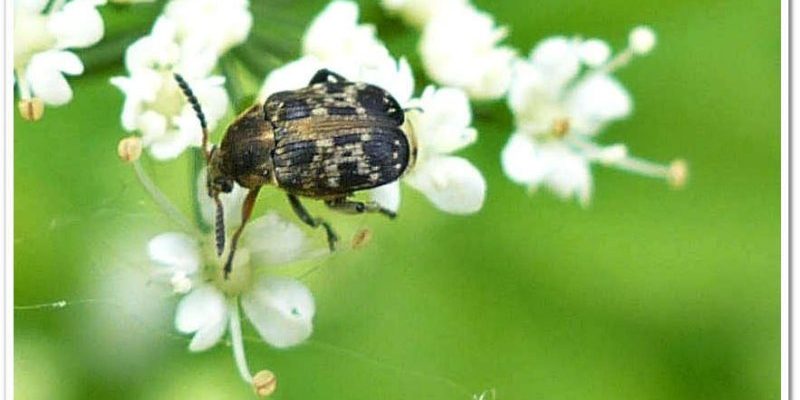
The Pea Weevil might be small, but it can cause quite a stir in the world of agriculture. This tiny creature, a member of the weevil family, has a taste for legumes, particularly peas. Imagine a tiny but determined bug feasting on your favorite pea plants! These little pests can wreak havoc in gardens and farms, making it essential to understand more about them. So, let’s dive in and explore what makes the Pea Weevil tick, shall we?
You might be surprised to learn that Pea Weevils not only affect the plants but also have a fascinating life cycle. Their story begins when they lay eggs in the seeds, leading to a series of challenges for farmers and gardeners alike. Picture this: you’re eagerly waiting for your garden to flourish, only to discover that a tiny invader has been munching away at your plants all along. That’s the reality for many who come across these pesky weevils.
What is a Pea Weevil?
The Pea Weevil, scientifically known as Bruchus pisorum, belongs to the family of beetles called Chrysomelidae. They have an elongated body that typically measures about 3 to 5 mm in length. Their distinguishing features include a long snout and smooth, shiny body, which can range in color from light brown to dark brown. They may not look terrifying, but the damage they can cause is quite significant.
These weevils are not just content with being little seeds of mischief; they have a real knack for surviving in various environments. You’ll often find them in gardens, fields, and anywhere legumes grow. When the weather is warm, they come out in droves, ready to lay their eggs and start their lifecycle, which poses a threat to crops. Understanding their behavior is crucial for anyone trying to maintain a healthy garden.
Life Cycle of the Pea Weevil
The life cycle of the Pea Weevil is a captivating journey that starts when an adult female lays her eggs on or inside a pea pod. Once the eggs hatch, the larvae emerge and immediately begin to feast on the pea seeds. This is where things get messy—inside the seeds is where the real damage occurs.
As the larvae feed, they tunnel through the seeds, causing them to become hollow and weak. You can visualize it like little bugs having a buffet right inside your favorite peas! After a few weeks of munching, they pupate within the seed, eventually emerging as adult weevils ready to cause more trouble. This whole process can take anywhere from several weeks to a couple of months, depending on the temperature and conditions.
Habitat and Distribution
Pea Weevils are found in various parts of the world, particularly in regions where peas are cultivated. They thrive in temperate climates and can often be spotted in agricultural zones dedicated to legume growth. Given their affinity for peas, it’s easy to see why farmers in these areas stay vigilant. In gardens and farms, they can be lurking, ready to do their sneaky work.
In terms of habitat, they prefer warm areas during the growing season. If you plant your peas in a sunny spot, unfortunately, you may be inviting these little pests to your garden party. They can also survive in stored peas, making it essential to keep your legumes in sealed containers to prevent an infestation. This adaptability allows them to flourish almost anywhere legumes are present, from home gardens to large agricultural fields.
Dietary Preferences
As their name suggests, Pea Weevils have a particular fondness for peas. They primarily feed on the seeds of leguminous crops, including various types of peas, lentils, and beans. Imagine a tiny gourmet who only dines on the finest peas! This specialized diet allows them to thrive but also makes them a significant threat for anyone growing these plants.
When Pea Weevils infest a crop, they can quickly compromise the quality of the seeds. Farmers often notice that infested peas are smaller, shriveled, or even completely hollow. It’s like opening up a present only to find it empty! Understanding their dietary habits helps in managing and mitigating their impact, making it essential knowledge for anyone dealing with these pests.
Signs of Infestation
Identifying a Pea Weevil infestation early on can save you a lot of trouble. Some signs to watch out for include holes in the pods, damaged seeds, or even the presence of adult weevils. Keep an eye on your plants—if you notice some pods looking suspiciously empty or smaller than usual, it’s time to investigate.
Upon closer inspection, you might see tiny holes in the peas themselves, where the larvae have tunneled in and out. If you’re not paying attention, it can be quite surprising to find your once-proud harvest compromised by these tiny intruders. Catching them early is crucial, so regular checks in your garden will go a long way in prevention.
Managing Pea Weevil Infestations
So, what can you do if you find those pesky Pea Weevils in your garden? First, consider crop rotation. Changing the location of your legumes each planting season can help prevent weevils from getting comfortable and turning your garden into a buffet. Think of it as keeping things fresh and unpredictable for them!
Another effective method is choosing resistant pea varieties. Some peas have been bred to withstand attacks from Pea Weevils, offering you a more robust option in the battle against infestations. Additionally, you can implement natural predators like parasitic wasps, which help manage Pea Weevil populations without harming your crops.
Prevention Tips
Prevention is always better than cure, especially when it comes to tiny pests like the Pea Weevil. Start by ensuring you plant your legumes in well-drained soil, as this encourages healthy plants that are less susceptible to infestations. It’s also wise to keep the area around your garden tidy, as debris can attract weevils.
If you’re saving seeds for the next planting season, make sure to store them in airtight containers to prevent any adult weevils from sneaking in and laying eggs. Regularly inspecting your stored seeds can help you catch any potential threats before they become a bigger problem. Keeping things clean and organized makes all the difference!
Impact on Agriculture
The impact of Pea Weevils on agriculture is substantial, especially for farmers whose livelihoods depend on legume production. Infestations can lead to reduced yield, lower seed quality, and consequently, a drop in profits. It’s a tough reality, particularly for small-scale farmers who may not have the resources to combat these pests effectively.
Moreover, the presence of these pests can also discourage new growers from entering the market. Who wants to deal with a pest that can demolish their crops overnight? Understanding their destructive nature and implementing preventive measures is crucial for sustaining healthy agricultural practices and maintaining food supplies.
Interesting Facts About Pea Weevils
| Scientific Name: | Bruchus pisorum |
| Size: | 3-5 mm |
| Color: | Light to dark brown |
| Habitat: | Fields, gardens, agricultural zones |
| Diet: | Peas, lentils, beans |
| Lifecycle Duration: | Several weeks to months |
In conclusion, the Pea Weevil might be small, but its impact on gardens and agriculture is significant. Understanding how these pests operate can arm you with the knowledge needed to protect your precious crops. Whether you’re a farmer or a home gardener, being proactive in monitoring your plants and employing preventive measures can save you from the trouble of dealing with infestations.
So, as you celebrate the fruits of your labor in your garden, keep an eye out for these little troublemakers. With a bit of vigilance and knowledge, you can enjoy a healthy crop of delicious peas without the unwanted company of the Pea Weevil!
FAQ
What attracts Pea Weevils to my garden?
Pea Weevils are primarily attracted to leguminous plants like peas, lentils, and beans. The scent of these plants can lure them in, making your garden an inviting place. They thrive in warm conditions, so a sunny garden can be particularly attractive to them. Ensuring you maintain a clean space around your plants can deter these pests.
Are Pea Weevils harmful to humans?
No, Pea Weevils are not harmful to humans. They do not bite or sting, and they do not carry diseases that affect people. However, they can be quite detrimental to your crops, causing significant damage which can lead to economic losses for farmers and gardeners alike.
How can I tell if my peas are infested with Pea Weevils?
If you suspect your peas are infested, look for holes in the pods and signs of larvae inside the seeds. If the seeds appear shriveled, empty, or have tiny exit holes, those are all indicators of a Pea Weevil infestation. Regular checks can help you catch them early.
Can I eat peas that have been infested with Pea Weevils?
While it’s technically safe to eat peas that have been infested, they may not taste great and could be compromised in quality. It’s typically best to discard infested peas to avoid any unpleasant experiences when cooking or eating.
What natural predators can help control Pea Weevil populations?
Natural predators like certain species of wasps can be effective in managing Pea Weevil populations. These wasps lay their eggs inside the weevil larvae, effectively controlling their numbers without harming your plants. Introducing such beneficial insects into your garden might be a wise option.
Do Pea Weevils bite?
No, Pea Weevils do not bite humans or animals. They are primarily focused on feeding on plants and do not pose a direct threat to people. However, their feeding habits can significantly damage your crops, which is why they are seen as pests.
When do Pea Weevils typically appear?
Pea Weevils are most commonly active during the warmer months when the peas are growing. They can become a problem in late spring and summer, coinciding with the peak growing season for peas. This is when you should be extra vigilant in monitoring your plants.
Is it possible to prevent a Pea Weevil infestation?
Yes, it is possible to prevent an infestation by employing several strategies. Crop rotation, cleaning up plant debris, and using resistant varieties of peas can significantly reduce the chances of a Pea Weevil invasion. Maintaining a healthy garden environment is key to prevention.
How long do Pea Weevils live?
The lifespan of a Pea Weevil can vary, but adults typically live for several weeks to a few months. Environmental conditions like temperature and humidity can influence their longevity. The cycle from egg to adult takes a few weeks to a couple of months, depending on conditions.
What should I do if I find Pea Weevils in my stored peas?
If you find Pea Weevils in your stored peas, it’s best to discard the infested seeds to prevent further spread. Inspect your remaining seeds carefully and store them in airtight containers to avoid future infestations. Keeping your storage area clean can help deter these pests as well.

